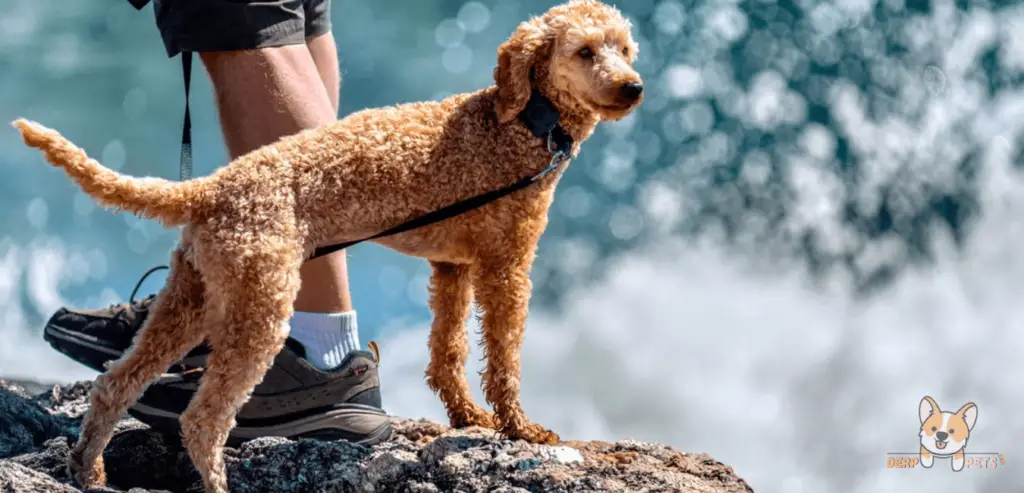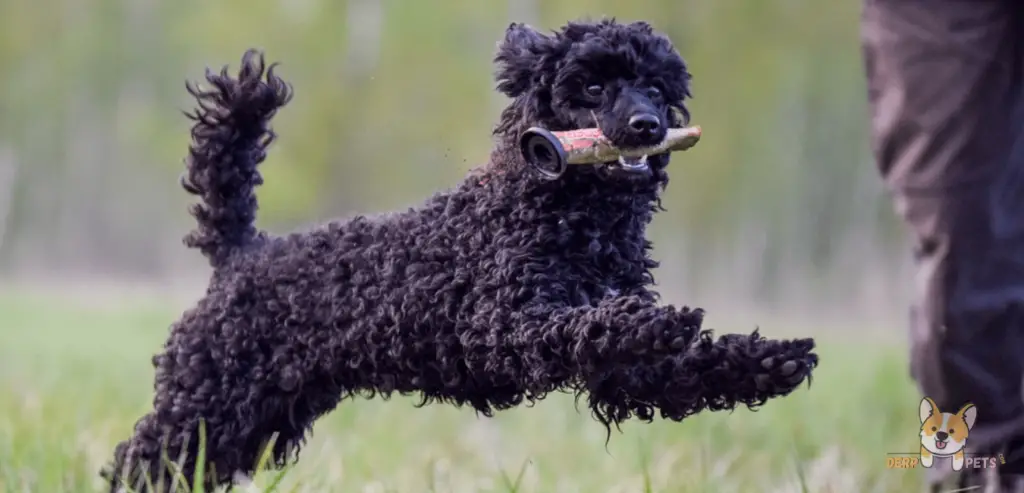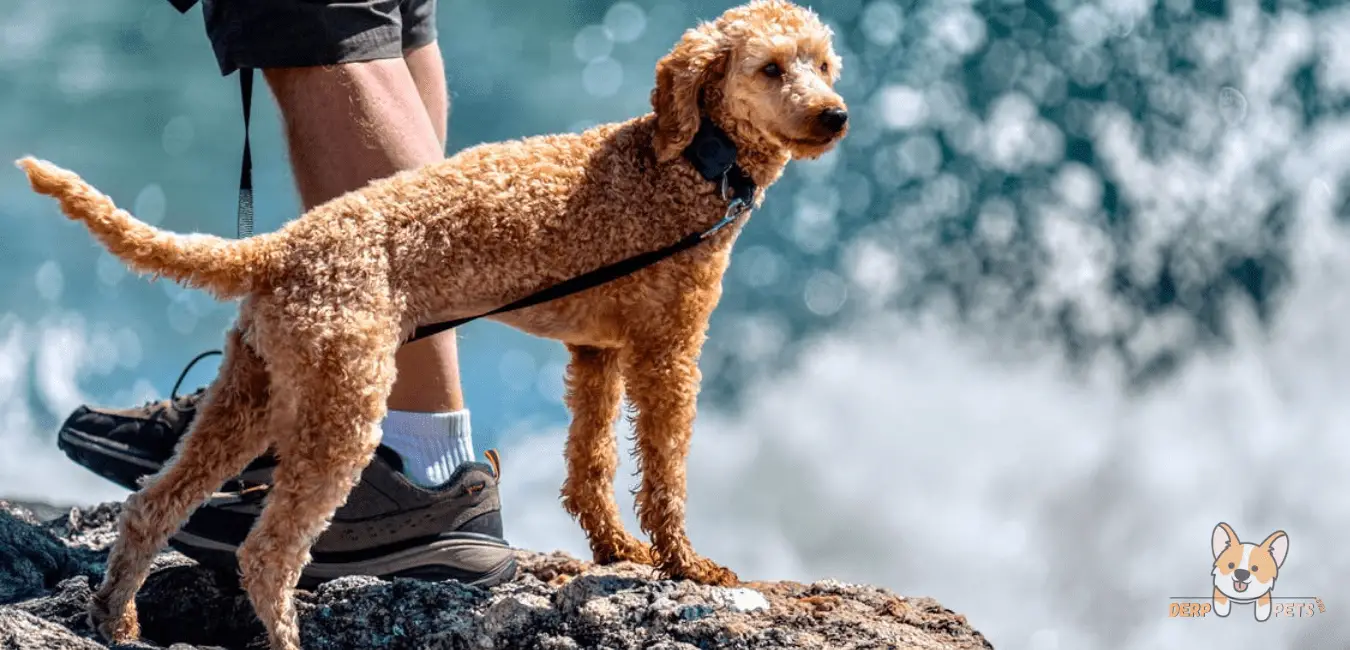
Many of us often wonder why poodles are in the non-sporting group, while they were used as water retriever dogs for more than a century.
Well, here is everything you need to know.
Why Are Poodles Non-Sporting?
In the 19th century, about 87% of breeders cared nothing about poodles’ ability to hunt and started breeding them as pet dogs. Later American Kennel Club (AKC) tossed poodles in a non-sporting group as poodles not used as hunting dogs anymore because they had gained popularity in the nation as show ring dogs and frou-frou (ditzy) pet dogs.
That is a pretty short answer, and there is much more to say, obviously.
Here are more details on why poodles are in the non-sporting group.
How Are Poodles Classified As Non-Sporting Breeds?
Every dog that has been without work for so long — they were classified as non-sporting breeds. Poodles and English bulldogs are the best examples because centuries ago, poodles were used as waterfowl dogs – but that skill was long gone from them as they became companion dogs primarily.
And same goes with the bulldogs, as they used to be bull-baiting dogs, which have long gone out of fashion now — so they do not count as working dogs anymore because they don’t have enough in common with the dogs of the sporting group.
Interestingly, the Non-Sporting Group designation is one of the first that the AKC created.
In its earliest years, AKC saw dogs in two ways – Sporting and Non-Sporting.
Soon after, the Hounds and Terriers emerged and separated from the Sporting category while Working and Toy Groups left the Non-Sporting label behind.
Today, all that remains of the non-sporting group are the dogs that hold such varied traits that they just cannot fit easily or logically into any other group.
The non-sporting group is made of different breeds with varying sizes, coats, personalities, and overall appearance of the dogs.
They come from a broad mixture of backgrounds, so it is hard to generalize about this group of dogs.
From the sturdy to the compact and the differences in features can be vast. Most are excellent watchdogs and house dogs today.
Did All Kennel Clubs Classify Poodles As Non-Sporting Breeds?
Unfortunately, Yes, all kennel clubs classify poodles as non-sporting breeds.
But every Kennel Club has its own mean of the non-sporting group. If we go through each Kennel Club, the list will be huge!
Hence, we concluded the short history of how some famous kennel club tossed the poodles in the non-sporting group (or you can say Utility Group).
The Kennel Club (England)
The Kennel Club in England registered their first Poodles in 1874 and put it in a Utility group.
The name “Utility” basically means fitness for a purpose! And this group consists of a much mixed and varied bunch, most breeds having been selectively bred to perform a specific function not included in the sporting and working categories.
The rationale for poodles could be that at the time they were placed in a group, they were not only more than just gundogs, but their other functions were more well known.
American Kennel Club (AKC)
Poodles were first recognized by the American Kennel Club (AKC) in 1886, and the American parent club The Poodle Club Of America (PCA) was founded in 1896.
The PCA maintains the standards or breed expectations that should be seen in America for each of the 3-sizes poodles.
All 3-sizes hold to the same breed standard; the only difference between the three sizes is their height requirements.
Later, poodles were classified in the Non-Sporting group for the Standard and Miniature sizes and the Toy group for the toy size.
United Kennel Club (UKC)
Poodles were first recognized by the United Kennel Club (UKC) in 1914.
The poodle was then divided by UKC into two breeds, Standard poodle and poodle, in 1999.
Poodles were registered in the Gun Dog Class for the Standard poodle size and in the Companion Breed class for the Miniature and Toy sizes.
The United Kennel Club has always viewed poodles as a sporting breed.
Canadian Kennel Club (CKC)
However, “The Canadian Kennel Club, which started in 1888, had the standard poodle in the sporting group originally (classified the poodle as a retriever) but when CKC recognized the miniature (toy) poodle, they moved both sizes into their non-sporting group in 1938.
Are All Poodles And Doodles Is In The Non-Sporting Group

There are three different types of poodles, Standard Poodles, Miniature Poodles, and Toy Poodles, that register in non-sporting groups. Because kennel clubs only recognized pure breeds and from a pedigree perspective, all three versions of poodle are the same except their height.
Miniature poodles are between 11-14 inches tall, and Standard Poodles can be up to 18 inches tall.
On the other hand, all types of oodles and doodles and poos are the mixed breed of Poodles, and those mix-breeds are typically known as ‘designer dogs,’ which aren’t yet classified as pure breed.
The first designer poodle bred as a Cockapoos, a mix of Cocker Spaniel with a Miniature Poodle.
And that’s how their journey began! Now there are around 61 poodle mixes (designer poodles) out there that known as:
- Labradoodle
- Bidoodle
- Goldendoodle
- Cavapoo
- Newfypoo
- Scoodle
- Westiepoo
- Boxerdoodle
- Chipoo
- Maltipoo
- Cockapoo
- Huskydoodle
- Sheepadoodle
- Shih Poo
- Schnoodle
- Yorkipoo
- Pomapoo
- Peekapoo
- Saint Berdoodle
- Whoodle
- Bernedoodle
- French Bulldoodle
- Choodle
- Sheltiedoodle
- Bassetdoodle
- Groodle
- Irish Troodle
- Vizsladoodle
- Pooton
- Foodle
- Rottle
- Bordoodle
- Bolonoodle
- Weimardoodle
- Aussiedoodle
- Irish Doodle
- Doxiepoo
- Pugapoo
- Great Danoodle
- Airedoodle
- Jackapoo
- Schnoodle
- Poogle
- Corgipoo
- Cairnoodle
- Springerdoodle
- Pyredoodle
- Shepadoodle
- Havapoo
- Eskipoo
- Flandoodle
- Mastidoodle
- Griffondoodle
- Ratoodle
- Tiboodle
- Doberdoodle
- Belgian Doodle
- Pit Boodle
- Bossypoo
- Canoodle
- Affenpoo
In the list of 61 poodle mixes, Labradoodles, Goldendoodles, Snorkies, Yorktese are the most popular poodle mixes today.
Why Doodles Not Recognized By Kennel Clubs
Well, the reason is pretty simple, doodles and other mixed poodles are not recognized by any kennel clubs because these breeds aren’t pure or pedigree. These breeds are just hybrids and can’t be registered with national kennel clubs, plus don’t even officially exist from kennel clubs’ perspective.
Every kennel club has its measures to register dog breeds! Because Kennel clubs register breeds to maintain uniformity and protect the breed standard.
Registering a new breed isn’t an easy task. It’s complex, and it takes time, maybe multiple years, in some circumstances.
Let’s take an example from American Kennel Club as it maintains the most extensive registry of pedigreed dogs in the world.
AKC currently enrolls 150+ breeds, representing a broad mix of sizes, colors, coats, temperaments, and heritages.
Here’s how AKC registers a new breed.
- The dog breed must have 100+ existing family members in the form of the (National Breed Club) around the nation.
- The existing family member must be located in 20+ states.
- The dog must have a three-generation pedigree, plus the dog in that pedigree must all be of the same breed needed.
- The dog breed must be in existence for 40 years.
- The breed’s club-standard must be approved by American Kennel Club.
After demonstrating everything, if the above criteria are met, the information is presented to the AKC’s Board of Directors to complete the Full AKC Registration.
But it’s pretty hard for poodle mixes to be recognized by American Kennel Club because AKC doesn’t prefer designer dog breeds, as there is a long list of pure dog breeds in the line to accept by AKC.
How Did The Poodle Get Lost As A Waterfowl Retriever?
A fair amount of the blame goes to the poodle breeder as they haven’t been selectively bred them for their ability to retrieve. And owners are also responsible that the poodle lost their versatile retrieving skills because poodle owners didn’t use them for hunting upland games.
But the poodle still possesses an excellent nose, hearing, drive, and intelligence, which means the poodle can still work as a hunting dog if the owner knows how to use them.
However, sometimes training a poodle can be difficult because poodles are a pretty sensitive breed — and they often slow to mature as well, which means you can’t instruct them forcefully to do certain things.
Plus, poodles are highly intelligent, once they learn something from you, it always stays in their mind, so be sure you only train them in the right way for the good things.

